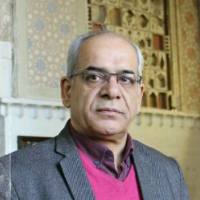Historical and Social Contexts of the Formation of Qajar’s Pavilions at World Exhibitions and Their Legacy in Iranian Modern Architecture
In the second half of the nineteenth century, the world celebrated the attainments of the industry by establishing universal expositions. From 1867, each nation had to display its culture and architecture by erecting a pavilion. The presence of Iran’s pavilions in the universal expositions, especially in seven periods, from 1867 to 1913, brought new ideas about redefining architecture and reinterpreting architectural history. This event was synchronous with the vicissitude of political and social of the Qajar era in Iran. These pavilion structures reflect some crucial features to understand the historical contexts of Iranian Modern Architecture. This paper will discuss the influence of these pavilions on the genesis of Iranian Modern Architecture by addressing four issues: (1) Architecture and national identity: the form and the exterior façade of the pavilion structure had to reflect the Iranian identity, so the government tried to come up with an architecture that would show it well. Therefore, there was particular sensitivity in the relationship between architecture and national identity. Stressing on historical styles as a resource for demonstrating national identity found an important role. The issue that which style and historical works should be selected and exposed to visitors was a kind of a new challenge. The subject of national identity, after the defeat of Iran in the war with Russia, became more intense. During the Nasser al-din Shah reign and especially Mozaffar al-Din Shah and Mohammad Ali Shah eras (the time of these two kings coincided with the constitutional revaluation), the issue of national identity has been bound up with the materials of ancient Iran and has influenced the design of pavilions. (2) Architectural history: referring to the history and selecting the form and figure for designing pavilions was the other issue of the Qajar government. The attendance of French architects has helped this matter. This issue impacted Iranian architecture in small dimensions, but in an influential way. Howbeit, this subject was not so noticeable in the early pavilions, while it left its mark on the four Iranian pavilions from 1889 to 1913. This subject defined and framed a noteworthy and sensitive vision about historical periods of Iranian architecture. (3) Archaeology and ancient Iran: from Fath Ali Shah period, archeology has played a prominent role in Iran's relations with other states of Europe, especially France. Granting archeological excavation rights to foreign states (particularly Achaemenid and Sassanid territories) in Fars and Khuzestan, highlighted the glory of these eras and their palaces, and influenced not only the field of architecture but also the thought of the Qajar rulers. Using columns and arches of the pre-Islamic period, it has been able to find a steady place in the design of Iranian pavilions. (4) The discourse of Orientalism: the latter issue, which unfortunately has not been able to attract the attention of researchers in the analysis and scrutiny of modern Iranian architecture is Orientalism. Orientalism as a strong discourse in the second half of the nineteenth century had a great impact on political and social life and even the architecture of Iran. This issue is tractable in design of Iranian pavilions in the Qajar era.
- حق عضویت دریافتی صرف حمایت از نشریات عضو و نگهداری، تکمیل و توسعه مگیران میشود.
- پرداخت حق اشتراک و دانلود مقالات اجازه بازنشر آن در سایر رسانههای چاپی و دیجیتال را به کاربر نمیدهد.



